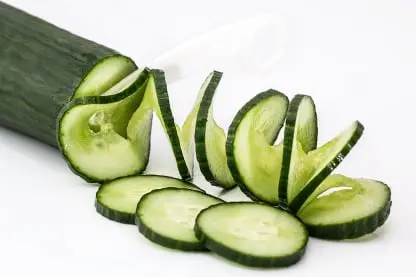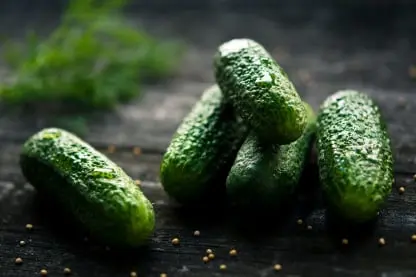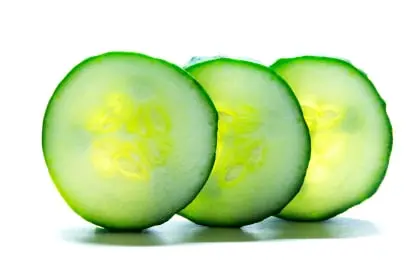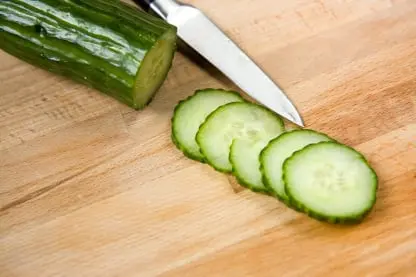Cucumber packing app:
Cucumber packing app for all cucumber packing, sorting, grading, washing: Pack cucumber for domestic and export, full cucumber inventory, cucumber quality inspection, cucumber orders sales and shipping. Cucumber packing audits, traceability and cucumber recalls.

Cucumber Packing App for accurate order filling & production
View Packing App Specifications.
Cucumbers, botanically berry fruit, belong to the gourd family (Cucurbitaceae) and have juicy, fibrous flesh. Due to its subtropical origins, the cucumber’s heat requirements are high and it is therefore cultivated predominantly as a greenhouse product.
There are two principal varieties, distinguished by their manner of cultivation:
slicing cucumbers, snake cucumbers: these are cultivated in greenhouses and polytunnels and are therefore largely unaffected by external weather conditions, making them suitable for cultivation virtually anywhere in the world. They are approx. 40 cm long, reach a diameter of 10 cm and are smooth-skinned.
pickling cucumbers: these are outdoor-grown and therefore have particular climatic requirements. They are sometimes only a few cm long, but may grow as long as 20 cm, and are thick and rough-skinned.
When unripe, cucumbers are green-colored. As they ripen, they turn yellowish-white or yellowish-brown. Modern cucumbers are basically free from bitter substances. However, the bitter substance elaterin may sometimes form in pickling cucumbers in particular, where it may be present in particularly large quantities at the stem-end.

Cucumber packing app manages food safety
Extending the shelf-life of fresh produce through innovative packaging is one measure that can help towards reducing food waste. For example, a cucumber wrapped in packaging stays fresh for up to 14 days, while an unwrapped cucumber stays fresh for about 5 days.
Cucumber packaging
According to the United Nations (UN) Food and Agriculture Organization (FAO) report, about one-third of all food produced on the planet is lost and not consumed by humans. The fresh fruits and vegetables category accounts for 44% of total global food losses. Furthermore, FAO reported that around half (45-55%) of all fruits and vegetables produced worldwide is lost or wasted along the supply chain. In medium- and high-income countries, most food waste happens at the retail and consumption stages of the supply chain.
Cucumbers have a reputation for freshness. They brighten the flavour of everything from salads to summer cocktails. However, cucumbers are highly perishable and suffer from moisture loss, shriveling, yellowing, peel damage, and decay. Discover with our infographic how specialized Amcor packaging can help to reduce food waste of fresh produce this cucumber season.

Cucumber Packing App for reduced food & fresh produce waste
Harvesting and Handling
Cucumbers are harvested at a range of developmental stages. Depending on cultivar and temperature, the time from flowering to harvest may be 55 to 60 days. Generally fruit are harvested at a slightly immature stage, near full size but before seeds fully enlarge and harden. Immature fruit are green at the edible stage, except in a few cultivars where they are white or yellow. Firmness and external glossiness are also indicators of a pre-maturity condition. At proper harvest maturity, a jellylike material has begun to form in the seed cavity.
Straight, uniformly cylindrical fruit slightly tapered at both ends are of highest quality. Additional quality indices include size, freedom from growth or handling defects, freedom from decay, and lack of yellowing.
Cucumbers are listed as non-climacteric, yet there is a burst of ethylene production that precedes a rapid loss of chlorophyll in mature fruit. Most fresh-market cucumbers are packed in fiberboard boxes.

Cucumber packing app manages supplier food quality and traceability
Continental cucumbers have thinner skins than conventional short green cucumber varieties, allowing rapid dehydration and fruit wilting during transit, marketing and retailing. Growers have been packing fruit in plastic bags to overcome this problem, and placing the plastic bags in cage pallets for interstate transport. This system provides minimal damage protection to the cucumbers, and was not compatible with palletised supermarket merchandising systems. A better system of packaging was needed.
Overseas investigations revealed individual fruit wrapping and packing into cartons offered the best packaging system, wrapping machinery being readily available. PVC and perforated polyethylene was evaluated for performance on continental cucumbers and for use through automatic wrapping machinery. 19 micron PVC and perforated polyethylene gave a similar improvement in shelf life from 2–3 days to 14 days at 10°C when applied through automatic shrink wrapping machinery. Both materials performed satisfactorily on Vito and Aucaan automatic wrapping machines.
Best cartons had 383 x 330 x 105 mm internal dimensions and of self locking tray construction. Approximately 70% of cucumbers could be packed in this size carton, but 450 x 310 x 115 mm cartons were required for larger fruit.